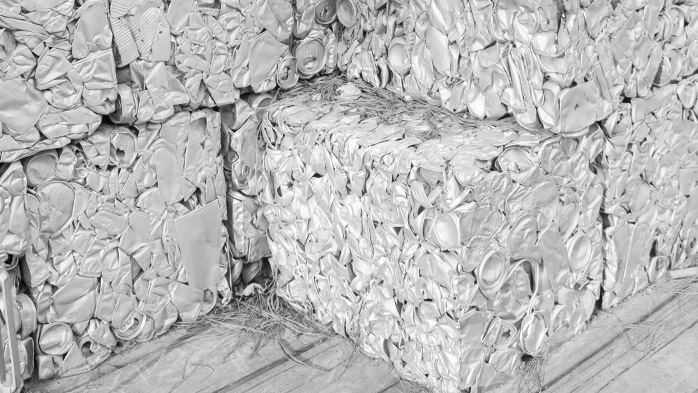Aluminum Scrap Markets

November 20, 2025
EU scrap export concerns marginal for US can sheet markets
Written by Nicholas Bell
EU trade chief Maroš Šefčovič confirmed work on a potential restriction on aluminum scrap exports, according to CRU Group.
Officials have not yet detailed the scope, although new measures may arrive in the spring.
CRU Group, AMU’s parent company, noted the intention appears balanced rather than prohibitive, which would help stabilize availability for several grades within Europe.
These discussions gained momentum over the past couple of months as US buyers increased demand for imported scrap, which is not covered by Section 232 tariffs and not subject to the 50% tariff rate applied to primary aluminum units.
Scrap has become an appealing substitute for primary aluminum units because of this, especially after this year’s sharp rise in primary costs and the Midwest delivery premium.
The tariff environment also pushed buyers to widen their buying spread to the resulting Midwest transaction price (LME settlement + Midwest premium) quoted as a percentage of the all-in price of primary aluminum delivered to the US Midwest.
As a result, scrap’s relative cost fell compared with primary even when its outright price held steady or increased slightly over the same period. In that context, even early suggestions of upcoming EU export restraints drew market attention.
What does import data say?
Despite the attention, US data from the Department of Commerce shows the stakes for the domestic market are smaller than they may appear. Because of the recent US government shutdown, several federal statistical releases have been delayed.
As a result, the International Trade Commission’s public import database has not updated beyond July. Therefore, all year-to-date comparisons in this article reflect the period January through July, which is the most recent data available.
During that period, total US aluminum “waste and scrap” imports increased by 115,204 metric tons (t), or 30%, compared with the same stretch of last year.
However, imports from the EU-27 (excluding the UK) made up only a small share of that expansion.
Shipments from the bloc rose 146% year to date, but the increase amounted to around 7,625 t, roughly 6.6% of the overall US scrap import growth, and totaled 12,829 t for the year-to-date period.
In other words, even a meaningful slowdown from Europe would not significantly alter US aggregate scrap flows.
Where is the growth concentrated?
The strongest increases have been narrowly focused rather than spread across the entire scrap complex from the region.
Used beverage containers (UBCs) represent the most visible change. Year-to-date imports from the EU-27 (excluding the UK) climbed to 6,695 t in 2025, up from only 275 t during the prior year period.
UBCs are easy to ship, consistent in chemistry, and attractive to buyers seeking to reduce exposure to primary aluminum, especially in periods of high LME prices and elevated premiums.
The second notable rise came from the category labelled “aluminum waste and scrap not elsewhere specified or included.” Although the category is broad and often difficult to interpret, shipments increased to 832 t year to date from 160 t in 2024. Even so, the absolute tonnage remains small.
Structural differences between US and EU
CRU estimates European beverage can sheet production in 2024 totaled a little under two-thirds of US output.
In volume terms, US production exceeded Europe’s by hundreds of thousands of tons even without including future additions such as Aluminum Dynamics’ Columbus mill or Novelis’ Bay Minette facility.
That difference places recent changes in US UBC imports in perspective, since the gap in can sheet output far exceeds the small increases in US imports of UBC scrap from Europe.
Body stock consumption is the primary aspect of this divergence, as it comprises the larger share of output in comparison with end stock.
According to CRU estimates of body can sheet production for 2024 in the EU-27 (excluding the UK and with Swiss volumes combined with Austria) and the U.S., the bloc consumed less than half as much body stock as the US while producing about 60% as much body can sheet.
In other words, Europe produces more can sheet relative to its internal beverage can sheet demand than the US does. That surplus, combined with Europe’s higher recycling rate, supports a stronger closed-loop system for returning UBCs to rolling mills.
Recycling rates and UBC supply
European Aluminum, the region’s trade association, reported a 75% beverage-can recycling rate for 2024 across the EU plus the UK, Iceland, Norway, and Switzerland.
Several of these non-EU countries having rolling capacity but do not produce beverage can sheet, aside from very small volumes at the Bridgnorth mill in the UK, based on CRU data.
The US, by comparison, posted a 43% recycling rate, according to the Aluminum Association and Can Manufacturers Institute.
Even with the much higher recycling rate, applying these rates to CRU’s total can stock consumption (includes body as well as end stock) suggests that Europe’s scrap generation last year was around 120,000 t lower than the corresponding UBCs generated by the US market.
Keep in mind the figures reflect only the metal used in the production of cans and serve as a proxy for the tons that ultimately enter the market as finished cans. They do not include internally generated pre-consumer scrap created during the rolling and converting, which is recovered and remelted upstream before any cans reach consumer.
Although the US total is higher in absolute terms, the return rate is far lower, leaving US rolling mills short of the UBC volumes required to match their larger production base.
Europe, meanwhile, generates more UBC material per unit of body stock consumed and is more likely to produce a surplus of scrap.
Scale of European UBC outflow
When set against Europe’s estimated UBC generation, shipments to the US remain modest.
Using the January-July increase in UBC exports from the EU-27 and extending that figure across the full year yields an annualized total of roughly 10,535 t.
That represents only around 1.5% of Europe’s overall UBC generation, even after accounting for the sharp rise in exports that followed the implementation of several Section 232 measures in the spring.
Taking the strongest monthly readings and applying them across the full year produces a level equal to only 2.5% of Europe’s UBC supply.
Both figures would represent a smaller portion of Europe’s UBC supply in relation to its body stock output.
Conclusion
This suggests, at present, US demand for European UBCs remains too small to materially affect the availability of post-consumer scrap within Europe’s can sheet market.
The US has diversified sources of imported scrap, and a much larger structural shortfall tied to its lower recycling rate, while Europe’s higher recovery rate and relatively balanced sheet supply leave it with more than enough material to absorb current UBC export levels.
Although policy discussions have raised concerns, in the end, the underlying volumes show that present flows have minimal impact on both region’s beverage can sheet sectors.







